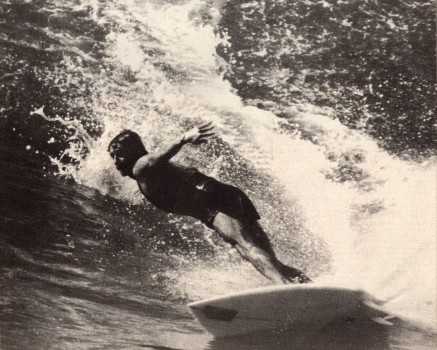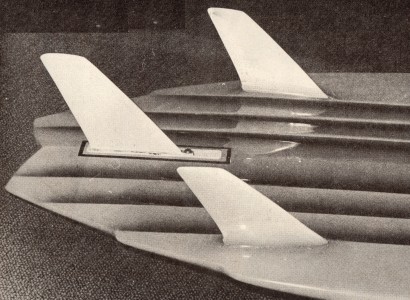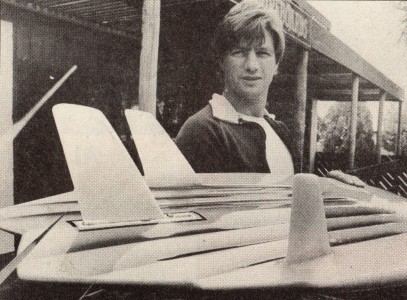
surfresearch.com.au
tracks : surfboard design, 1982.
tracks : surfboard design, 1982.
|
|
|
|
|
|
 |
surfresearch.com.au
tracks : surfboard design, 1982. |
| Terry Fitzgerald :
Sydney |
Kym Thompson : High Velocity Fin |
The buzz created in the area by one new move or one new board richochets around the local beaches. The end result: new ideas, new techniques and new surfers. The local surfers test their boards and their moves on these beaches. They temper mental toughness and then, off to the surf wars, wherever. NB. To achieve in Sydney you have to be in the top 1% — and even then you won't get a free ride! And so it goes! If you can make it in Sydney you can make it anywhere! Of course being totally involved in the Sydney area as I am, I'm totally biased. But, when being objective I cannot see any other area that has produced so much for so long. I do not see as much energy evolving from anywhere else. I'm not sure Hawaii can keep up. I'm excited about what the boys over the bridge at Bondi, Bronte, the 'Bra and Cronulla are going to do in the next few years. The Central Coast has the potential and I look forward to seeing what Japan will turn up in the future. But, for the moment, just on sheer weight of multi-faceted production, the northern beaches of Sydney. . . shiiii! Terry Fitzgerald. |
 |
| When the twin
fin was introduced to the surfing market, jaws
dropped, sceptics laughed. That was, until M.R. proved conclusively its ability to perform. It became a standard forum for high performance surf designs on the Australian and world market. A winner! Then out of sheer need and obviously a great deal of thought, S.A. developed and showed the ability of a 3 finned board. His brilliant effort on the contest circuit set a whole new trend throughout the world once again. In fact the impact was so impressive that suddenly we found people talking about the 4, 5, 6, 7, 8 etc. finned surfboard. All original! Well, no matter how many fins you want on your board, allow me to introduce you to a shape of fin that will improve performance once again. Ladies and gentlemen, grommets and surf nazis, this fin shape I refer to is the H.V. (High Velocity) FIN. Before you can begin to appreciate this concept, you firstly must realise that, contrary to most people's beliefs, water does not travel down a fin. It in fact travels across, front to back, not bottom to tip, which is the fallacy we've tended to design fins around. If you can't come to grips with that, you certainly won't be able to handle the rest of the information. |
 The H.V.
(Tranquility) |
| When the pressure
is released and the fin returns to its natural
position, the drive created by this is only equal to
that lost when it initially flexed. Isn't it better to have constant and maximum power at all times? I'm not a college professor or a N.A.S.A. engineer, nor do I pretend to be. I am an engineer in my own right, I've been designing and shaping surfboards for 14 years and I am always striving for improved performance. I do not consider it to be all and end all either, but I have found a significant improvement in total performance. The composition of the H.V. fin promotes the design and technical qualities of the board shape and does not take away from them.I have found a vast improvement in the ability of a board to realise its maximum speed without loss of manoeuvrability, in fact the smoothness of manoeuvres and directional changes is exceptional. For any or all of these reasons, I feel the H.V. Fin can achieve greater performance for you. If I didn't think so, I certainly wouldn't put my reputation on the line or waste time writing garbage. I'd rather go surfin'!
Kym Thompson is the owner of Water Cooled
Surfboards in Torquay, Victoria.
|
 |
|
|
|
|
|
|